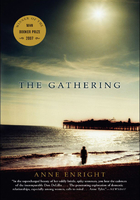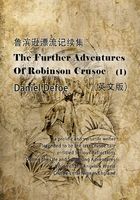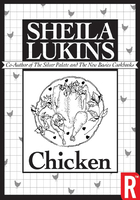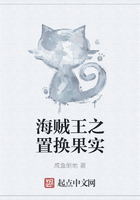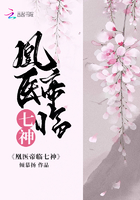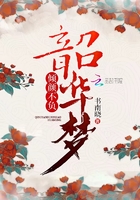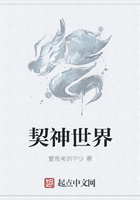Essential Questions for Organizations
We spend our days immersed in the people, processes, and products of organizations. No avoiding this and no reason to, but there is more to organizations than results, end points, and outputs. There is their beginning, their conception, their genetic code, their essence. That's what we will pursue here. Organizations may live within the limits of the "genetic coding" they were born with; they may have this built-in limitation, if we are assuming they share our own mortality. What if we were to look at them more expectantly? What if we were to assume the possibility of very long life? This chapter engages in the search for the organizational "fountain of youth." If we know what long life is about, then we can attempt to create conditions under which it might flourish.
What is so great about long-lived organizations? If more organizations included within their purpose their intent to live hundreds of years, they would behave quite differently. Too many of today's corporations live for the next financial quarter's results. Imagine the set of questions confronting an organization that wants to make it through the next financial period, versus those considered by a company that has been here 200 years and wants to be here at least 200 more. I'm imputing good to those organizations with the longer vision, the longer aspiration. It provides a strong counter to the short-term selfishness we so often experience.
We Are Living Our Questions
"How can I find happiness?" This familiar question provokes many of the actions most of us take each day. Happiness now…and now…and now. Unending happiness is not available to me in this life, but that does not stop me from asking how I might achieve it. And it's unattainability does not keep me from wanting it and working toward it. Ambitious questions with unattainable answers are the ones truly worth pursuing. They stretch us; they take us to our outer boundaries and help us reach beyond.
We are defined by our questions more than our answers. Ask me what I have done and you will hear my history; ask me what I aspire to and you will hear my dreams and longings. Consider the questions that recur in your life; consider the answers you seek. Here are intriguing, unanswerable questions that many of us keep asking:
Who am I?
Who am I becoming?
What gives my life meaning?
What give my work meaning?
What am I doing here?
How can I live a long, full life?
How can I find happiness?
You probably have recycled some of these questions many times. The fact that you have asked the same question before does not keep you from asking it again. You likely have a few questions that you return to regularly and with each visit come to deeper appreciation of the question's depth, its mystery, its intrigue—if not its answer. The compelling questions draw you on and define your purpose. You are pulled toward the unknown; you are drawn forward without a clear destination; you are searching for deeper meaning in your life. Even when you are not aware of the search, you are on the search.
Those large, living creatures we call organizations have questions too—questions voiced, questions implicit in their actions, questions that draw them toward their destiny. Some are immediate questions like, "How do we increase this quarter's return on investment?" Some are strategic questions like, "How do we achieve economies of scale?" Some are market-oriented questions like, "How do we stay competitive?" Any question can become defining for the moment. Like us, these organizations are defined by their questions more than by their answers. Here are a few questions you may have heard through your work:
What is our purpose?
What will we look like twenty years from now?
What is our core competence?
What difference do we make in the marketplace? In the community? In the world?
What will be the next development in our field? How might we get there?
What can we do to assure our continued existence?
Notice the parallels between these questions and those posed of the individual earlier. Notice the reach of the questions, the draw to the unknown future. These too are questions returned to again and again, questions that pull the organization toward an intriguing and unknown future. And the beauty of the organization is revealed in the pursuit. To the extent that the organization honors the pursuit of its larger questions, it is creating its future. Its aspirations for the future become the lens through which today is seen; today's actions incline it toward an imagined tomorrow.
Reframing the World With Our Questions
How might we think beyond the restraints that come with today's organizations? How do we get over the immediacy, the time compression, the growing stack of priorities, to imagine an organization that serves everyone invested in it—shareholders, citizens, workers, communities, customers, allies—and the world itself? We do it by reconsidering our assumptions about its life and life span.
As things stand now, organizations come into being, live, and die. Along the way, they go through various life stages that might be compared to a person moving from childhood through adolescence to adulthood and eventually death. They will likely merge or restructure or reshape themselves significantly many times during their life. Look in on the organization at any time and you will probably find its members engaged in the compelling issues of the moment, working hard to keep up with what is assailing them from all sides. Their heads are down, they are working furiously to resolve this problem so they can move on to the next… and they have been doing this for years. They are focused on surviving now. Step into any organization and ask the leadership, "Why do you keep doing this?" and you will likely see confused expressions reflecting a combination of recognition, impatience, and a need to get back to work. We do not have time for these questions—even when we have a glimmer of their importance.
And don't we know the parallel situations in our own lives? Swimming hard, usually keeping our heads above water, approaching our limits, and occasionally hearing, "Why do you keep doing this?" It's difficult to think about this question while swimming, and swim we must, so we put it aside—not without some gnawing knowledge that we are avoiding what is important in favor of what is urgent. Our situation is quite parallel to that of organizations. What usually happens to change things for us or for other individuals? One answer is: not much. We continue to swim until we die; we live with this nagging problem and it continues to drag on us. But there are better responses than that. What about those who do confront it? How does that happen?
For some reason, we step out of the world as we have framed it; we begin to see the world differently. Usually something or someone gets our attention. One common reason for altering our perspective is tragedy. Our doctor warns us that our life is at risk. Or our spouse threatens to leave. Or a neglected child makes desperate cries for attention. Or our heart rebels at the demands on it. Or a loved one dies. It is not always tragedy that reminds and shifts us to a larger perspective; some of us are strong and wise enough to shift ourselves. But whatever way it happens, we say, "This is not working.… There must be more to life than this.… I wonder what it is.… I am going to find a larger life for myself." We redefine what is meaningful in our lives; we renew our purpose; we act accordingly. And our new meaning and purpose often leads us to aspire to live less for self and more for others, to contribute to a larger community, to the fuller expression of our own humanity, to greater respect and love for the people around us. We commit to more transcendent values and purpose that will still have life long after we are dead. We do all of this by stepping back from immediate engagement with the world. We move to a lofty height where we see and reflect on our whole life and beyond. From this vantage, we decide what is important and what we will do about it.
Imagine an organization going through a parallel process. Imagine it stepping back from the pursuit of profit, or funding, or position—whatever drives it now—and saying, "This is not working.… There must be more to life than this.… We wonder what it is.… We are going to find that larger life for ourselves." Individuals turn in this direction and organizations must too—if they are to have a purpose beyond running after today's profits and priorities.
How can our organization thrive now while honoring the ideals it upholds?
What must live beyond this organizational generation? What are we doing about that?
How do today's plans reflect our larger purposes and values?
How can we help people succeed now, recognizing they are here for a short time in the life of the organization?
What is necessary for our organization to exist for centuries?
These questions pursue the essence of organizational longevity—what lives beyond the life of any one individual, system, division, product, term of office, administration, service, or structure. The questions reach for the unattainable, knowing that to reach is more fulfilling than to grasp.
Of course, some organizations live short, yet useful lives. Short-term existence and purpose are legitimate too; not everyone and everything needs to live with a sense of permanence. Just because an organization is vital now does not mean it should be here forever. Our bodies don't live forever and organizations don't have to either. Headlines about restructuring, hiring, firing, layoffs, delayering, and relocations testify to the organic nature of organizations as they seek to sustain their lives with different facilities, systems, settings, markets, and people. I'm not suggesting that all organizations do this expanding and contracting sensitively; but there is no built-in requirement for them to continue to hold a certain form, provide a certain product, or employ certain people. And there is no requirement that they work within the framework of the questions offered on the previous page.
There are also organizations that care nothing about the above questions, but rather care only about the bottom line now. And there are well-intentioned organizations that have no time for this attempt at transcendent thinking, who see no relationship between what they are doing and the condition of the world. And there are selfish, short-sighted, greedy organizations and people that would close this book on these paragraphs. My questions are for all of them, for all of us, whether we are now seriously asking the questions or not. These questions are for the part of the organization, and the part of you, that longs for organizations to make a finer contribution to the world.
Many organizations do think about the future beyond today. They examine their aspirations, they ponder their legacy—and see themselves coming up short. Disheartened, they see themselves falling into the gap between what they really should be (if they were any good) and their present (rather sorry) state. Other organizations see in the same situation the immersion in a swirl of forces calling out for constant, innovative adaptation, ripe for influence in the pursuit of their aspirations. There may be thousands of people in dozens of locations greatly complicating this pursuit of opportunity, but underneath it all there is an organism choosing to define itself. Individuals and organizations are free to find their own perspective: Fall into the gap or live lives in the creative swirl.
Every action an individual or an organization takes does not have to be fraught with profound implications. We can still fritter away an evening sitting in front of the TV or puttering around the house. An organization can waste resources impressing a visiting executive, or building detailed plans and procedures that will never be used. The occasional "lapse" into lethargy or self-importance or fussing with details does not have to be condemned; it's the patterns that are important.
Life
Life is first of the two core values essential to organizational success that continues for generations. Ascendance is the second core value, and we will consider it shortly. Life is the capacity for growing in the present. All hope for continued life is centered on the capability of supporting growth now. A life-centered organization is dedicated to seeing that life today feeds life for generations to come. This core value informs every decision; it is more important than any one product or service or part of the organization. Everyone within this organization knows it must have the continuing capacity to feed itself, to thrive. Organizations that want to survive for generations must have life now, but they must have more than just the ability to stay alive at this moment. An organization must be a reliably fertile ground, a place where life is constantly created, nourished, supported. It must be a place where the sources of life are replenished as well, a place where life can take root again and again. Read this paragraph again, converting "organization" to "individual" for a richer sense of the meaning of life.
Think about one organization you know well and consider these questions:
How is "life" defined in this organization?
What creates life for this organization? For members?
What will renew the life of this organization indefinitely?
How are other lives nourished by what this organization does? Stakeholders? Communities? Society? The world?
What is this organization doing to ensure its life for generations?
How does this organization contribute to the long-term survival of itself, its people, its communities, and the planet?
This is not a save-the-world view; it's a we-are-creating-ourselves-and-the-world view. This is not a call to action; it's recognizing the impact of the actions the organization is already taking on the long-term nourishment or starvation of itself, its communities, and its planet. Every organization is busily demonstrating its own answers to the above questions. Watch long enough and you will see the implicit answers. Consider nearly the same questions with a small organization like the family in mind:
How is life defined in this family?
What creates life for this family? For members?
What will renew the life of this family indefinitely?
What does this family aspire to pass on, generation to generation?
How are other lives nourished by what this family does? Friends? Neighbors? Community? Society? The world?
How does this family help people and the planet survive indefinitely?
In this life-filled perspective, the questions apply at all levels from individual to the family to the corporation, to the government and to the globe. Attending to life means being conscious of answers to questions like these. The opportunity for the corporate organization is to enhance the lives of employees, customers, the marketplace, and the world. The opportunity for the civic organization is to enhance life for its citizens, for the community, and for society as a whole. Most of what we now practice about enhancing life starts with ourselves and is confined to those immediately around us, in a limited time frame. We need to widen our reach.
Ascendance
Now to the second core value, ascendance. Ascendance means rising toward future completeness. The word "ascend" is familiar to us; we hear it and think of "rising" or "climbing"; both meanings fit with my notion of ascendance. Combine "ascend" with "essence" and you are closer to the meaning I am seeking: something that of its nature lifts toward its perfection.
Ascendance is an unfamiliar, intriguing word. Put it beside "organization" and you get an "ascendant organization." That conjures up shapes and energies I do not usually associate with organizations. For example, an ascendant organization would have an ingrained tendency to rise, to reach toward its future fullness, to long for its more complete and perfect state. This inclination would be so much of its nature that the organization could not long be diverted from pursuit of this purpose; it would turn toward it again and again. The organization would know and feel the pull toward this potential, a potential always over the horizon and never fully realized. Everything now present would be in service to this wonderful, elusive, and distant future state. The organization today would excel because it is drawn toward its own perfection. Questions like these would help an organization in the discovery of its ascendance:
What is this organization rising toward?
What impact does this rising toward completeness have on people and communities around it?
What will this organization put in place that will allow future organizational generations to ascend?
What will we be proud to pass on to the next generation?
How can we incorporate these aspirations into every moment of organizational life?
These questions can be asked of an individual or a family or a nation. I recall these questions coming up in my work and personal life. For example, I recall sitting in on a meeting with a group of older hourly workers, most of whom had invested their entire work life in this one manufacturing plant. They were close to retirement and talking about what they hoped they were passing on to the generations of workers that would follow them. I'm also recalling conversations with my parents about their hopes and dreams for us, their children. Both conversations fit with these questions and my notions of ascendance.
From the family organization perspective, we usually think of ourselves as "descendants," coming from those who lived before us. That conventional expression is a perspective reflecting children's subordination to past generations, emphasizing where we came from. Putting my notion to work, children could be considered "ascendants" rather than descendants. See the difference?
Future-focused… reaching toward completeness… building from the generations that came before… creating a world for future ascendants. Imagine your children as ascendants… and imagine ascendant cultures… and ascendant agencies… and companies and communities and societies.
An Ascendant Life
Life: The capacity for growing in the present.
Ascendance: Rising toward future completeness.
Life and ascendance cannot do it alone, but they are seed ingredients. The meanings of ascendance and life combine in the phrase, "the ascendant life"; each word informs and deepens the other. An ascendant life becomes something you might aspire to, whether you are an individual, a family, a company, or a town by asking these questions:
Does this organization have the capacity to rise and grow for generations toward its own completeness?
What would an ascendant life mean for it?
What might it be ascending toward?
How do our views of the present state of the organization change with an ascendant life perspective?
These questions expand consideration beyond the calls of daily life. My continued emphasis on the need for this ascendant, focus-on-creating-the-future perspective does not mean you or your organization will get there. It's not because it is attainable that we are drawn toward this future state; in fact we are drawn there because we cannot capture it in our lifetimes—a concept consistent with the early assumptions we are building upon. That mysterious and alluring future draws us forward and in the process suggests what we might do differently today; it creates a healthy restlessness. Our dedication to creating something more than what we inherited offers the possibility of expansive human thought and action right now, right here, on the ground, in this organization, today. The resolution of our most intractable organizational issues comes not from a head-on dealing with the problems or attempting to escape them, but from redefining it with this new perspective and in new terms. That is ascendant life at work.


